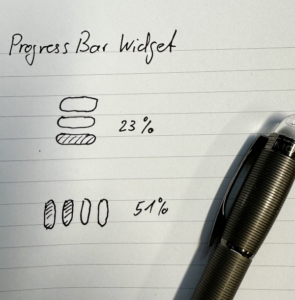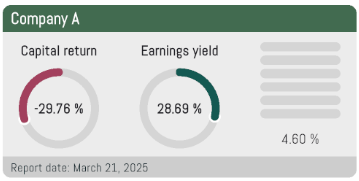AI is the perfect tool during the product exploration phase enabling us to build prototypes faster than ever before to repeatedly test product hypotheses. The goal is to try out a new product idea with real customers to get reliable feedback whether going all-in is worth the effort or not. In this article, we use the example of a stock screening product to illustrate how AI expedites this process significantly. If you are not using AI for this process, you will be left behind by those people who do because time-to-market matters.
If the Product Manager (PM) is exploring new features for an existing product of if the PM is acting more like an Innovation Manager (IM) as discussed in Misconceptions About Innovation and Product Management, speed of execution matters. For validating hypotheses, it is crucial to build Minimum Viable Products (MVPs) as quickly as possible so the PM/IM can obtain valuable customer feedback as early as possible. To be fast, Aritificial Intelligence (AI) can be a great tool in creating a first prototype. This prototype does not need to be a completely optimized piece of code, rather it should be just functional enough to test your hypothesis.
For example, in the early days of SuperStockApp, Inc. the hypothesis was that a group of people interested in stocks would spend money on a tool for screening stocks. Thus, the IM only focused on putting together what is required for the sole purpose of screening. There may be a lot of additional features that would easily go along with this idea, for example a watchlist to save interesting stocks for later and observe their performance, or a variety of screening algorithms to choose from that achieve different investment goals. However, for testing the fundamental hypothesis whether customers would accept a screening tool and be willing to pay for it, all these are not required yet; a single screening algorithm with a nice and simple User Interface (UI) to present the screening results in a beginner-friendly way is all it needs to test your hypothesis. If you cannot find traction for this fundamental feature, attaching more features to it may not significantly change the picture and you may be advised to go into a different direction.
These experiments require time and therefore we want to experiement as fast as we can because we may need to move on, and the faster we get to that conclusion the more efficient we will be with exploration. Fortunately, we are living in the day and age where we can delegate the majority of prototyping work to AI if we can break down our prototype into smaller well-defined components. For each of these components, we should define in several bullet points what their characteristics are and then AI will generate code for us that we can insert into our prototype. Let us now look at a concrete example of how to do that.
Assume that for our stock screening prototype, we require a widget that visualizes a percentage as a progress indicator. This is one of many components that we need to add to our MVP and by breaking down the MVP into smaller components (divide and conquer), not only can we easier specify the solution but also help AI to generate exactly the code that we need. The first step is to get a good idea of the key characteristics of this widget. It does help to scribble using the old-fashioned pen-and-paper method to get an understanding of what we need. Our goal is to come up with a list of bullet points that capture the essence of the component, in this case the progress indicator, so that AI can build it for us. By drawing different versions of the progress indicator we can easily identify these key characteristics.

Orientation – We want to support both horizontal and vertical orientation so that we can try out which variant is best for our UI.
Steps – As the progress bar should consist of multiple segments we need to define how many segments do we actually want. Again, this will help us optimize the look and feel in the UI.
Segment colors – We need to specify two colors, one for the segments showing the progress already made, and another one for the segments that are remaining.
Percentage – Most important of all, we do require the percentage value as a parameter to visualize it. Aditionally, we want to show the value as a text string along with the bar itself.
Now that we understand the key characteristics of the component that we want to insert into the screening UI to visualize the screening results, we can ask AI to generate a first version of this component. In this example, we are using Flutter for the prototype. A suitable AI prompt to rapidly prototype this component would be as follows (feel free to try out this prompt for yourself):
Create a ProgressBarWidget in Flutter with the following parameters:
1. "orientation" can either be horizontal or vertical
2. "steps" indicates how many individual segments the progress bar should have
3. "progressColor" specifies the color of a segment if it is highlighted
4. "defaultColor" specifies the color of a segment if it is not highlighed
5. "percentage" specifies the percantage value to be shown using the progress bar.
If the percentage is 50% and steps is 4, only the first 2 segments need to be drawn in progressColor, the remaining ones in defaultColor. Each segment should have rounded borders. The thickness and length of a segment can be defined as optional parameters. Finally, there should be a Text beneath the progress par to show the exact number.The first version of this UI component is already very close to the pen-and-paper drawing above. The below screenshot shows the screening UI after the code generate by AI has been inserted into it without any changes, except for providing suitable values for the parameters.

There is some fine-tuning to be done to make it fit more nicely into the UI (e.g. we could stack the percentage text in the center of the widget and add a caption to it so we know what this value refers to), but the majorty of the work has been completed by AI already. In its initial version, the progress bar consists of 77 lines of code that have been outsourced to an AI. Significant amount of time has been saved in this prototyping process because now the focus lies on functionality and not on hacking. Now sum up the time saved over all of the components that make up the prototype and you realize what a game changer the use of AI in this process is. PMs, IMs and software engineers can now very easily try out their assumptions and build a rapid prototype for a new feature or even an entire new product that may form the foundation of a new business opportunity.
Are you interested in how the final version looks like after fine-tuning it? Then check out my below video where I’ll show you the final result.
